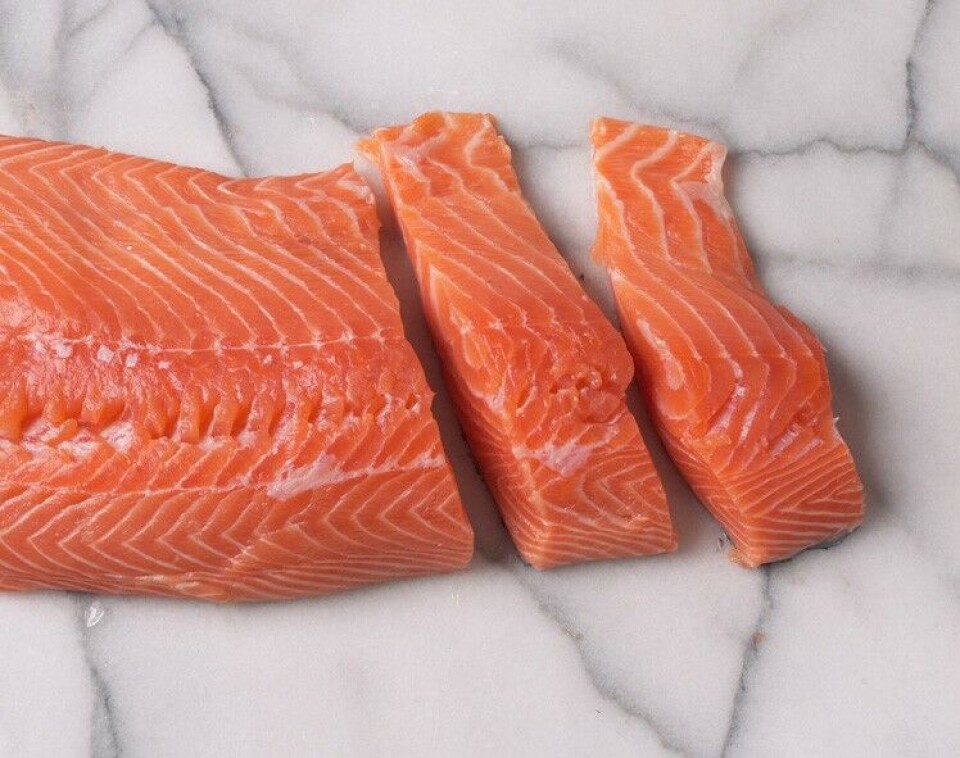
Broadcast forces pigment rethink
Australian salmon producers appear to have been forced into a radical rethink over the pigmentation they use to ensure their fish have pink flesh following a critical broadcast.
On Monday (31 October) the ABC broadcast an edition of Four Corners which reported that a synthetic form of astaxanthin was used as a colourant in the Australian salmon industry.
After the broadcast Huon, one of Tasmania’s key salmon producers, issued an open letter assuring its customers that synthetic astaxanthin was not only safe and sustainable but also potentially beneficial to human health.
The letter stated: “It is now possible to make the pigment directly, without the need to harvest wild crustaceans or cultivate organisms that produce astaxanthin. This form of the pigment is identical to that found in the wild food chain, and provides the same benefits to the fish. The ability to make an identical version of this nutrient increases the ability of the industry to sustainably grow without impacting other industries or depleting naturally occurring, but limited, resources. This nature identical astaxanthin provides vital antioxidant protection and improves robustness of the fish. It is an essential part of the salmon’s dietary requirements and is not just there to colour the fish.”
They added that: “There is a growing body of medical research that highlights astaxanthin as a valuable antioxidant for human health, and it is now included directly in neutraceutical products.”
Media pressure?
Since then, however, rival salmon producer Tassal has issued a statement that it plans to “become the first salmon farming company in Australia to use natural pigment supplements for all of its farmed salmon in Tasmania”.
Tassal CEO and MD Mark Ryan said the company had been investigating the viability of using a natural astaxanthin for some time and was “independent of recent media scrutiny”.
“We started this work because of the growing consumer preference for natural and organic products,” he said.
Mr Ryan said Tassal would work with Skretting to phase in the new natural pigment over the next 12-months.
“Sourcing a sustainable and reliable source of natural astaxanthin has been a complex task, but we are confident that by 2017 the first diets containing natural astaxanthin will be delivered to our farms,” he said.
He also stressed, however, that “natural and synthetic astaxanthin are chemically identical and both are equally food safe.”
Volte face
Meanwhile FIS reports that Huon has since announced that it will be following Tassal’s lead, despite its earlier assurances about synthetic astaxanthin.
According to the website, Huon’s CEO Peter Bender has followed up the letter defending the use of synthetic astaxanthin with a statement that they were also planning to move to a naturally sourced alternative.
"Whilst we would have preferred not to say anything until we were assured of reliable supply of 100 per cent of our salmon feed product containing the naturally sourced astaxanthin, we understand that the recent Four Corners story and Tassal's announcement today has increased interest in the use of astaxanthin," Bender said.
Status quo
Most salmon produced worldwide, however, still uses - and is likely to continue to use - the synthetic version, although some organic salmon are fed astaxanthin produced by a yeast (Phaffia rhodozyma) and previously extracted it from shrimp shells, although this proved more expensive.























































